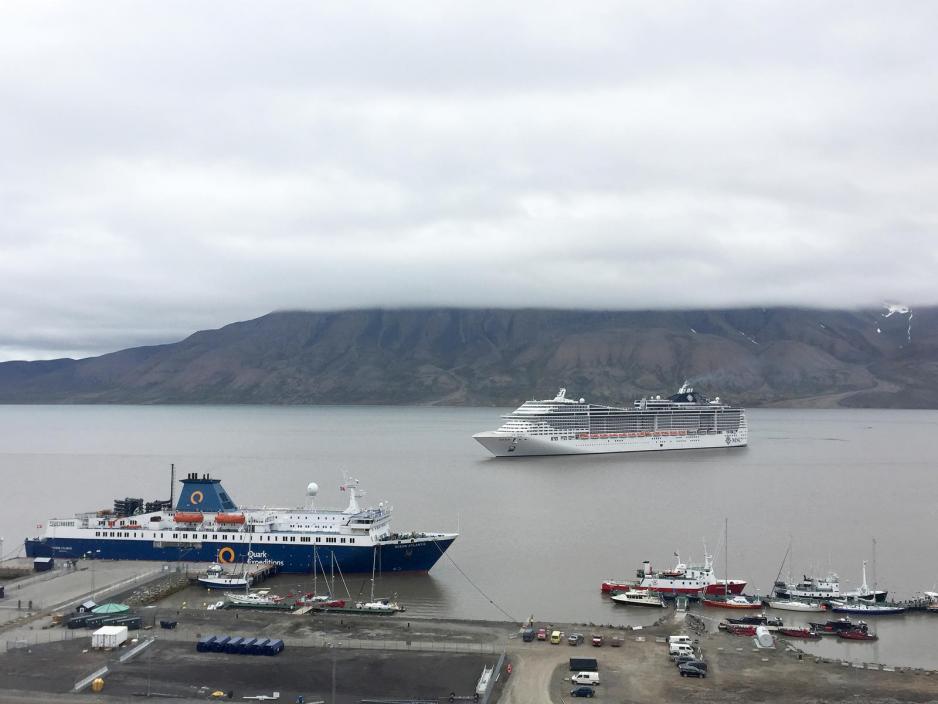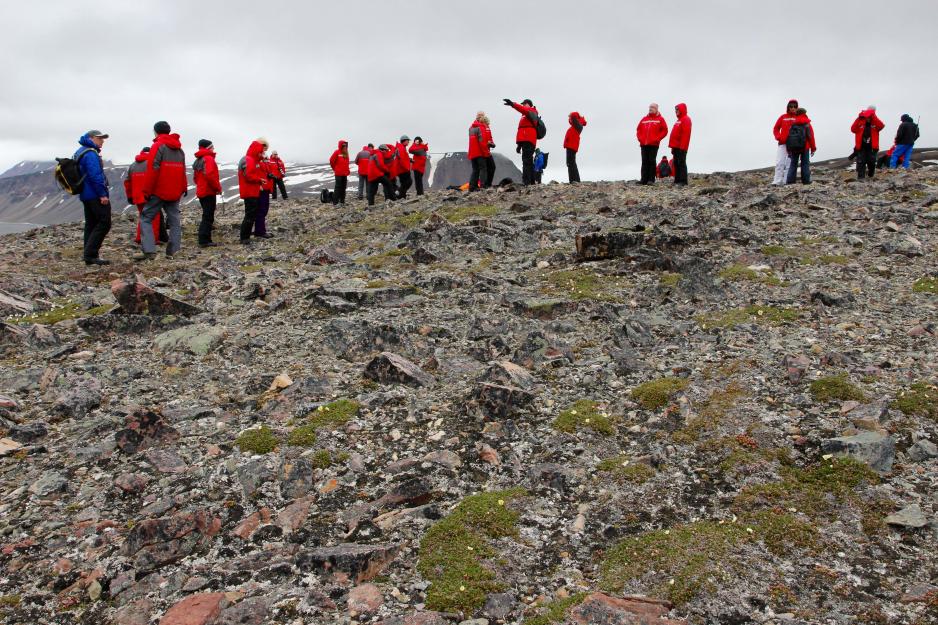Large Cruise Ships in the Arctic Change the Northern Way of Life

PhD Candidate Julia Olsen at Nord University has investigated the consequences of increased ship traffic in two Arctic communities in Russia and in Norway. – Traffic changes people’s life style and requires adaption, and I am surprised at how fast it goes, she says.
The researcher has looked at both potential and strains through studying societal consequences of increased ship traffic to Longyearbyen at Svalbard, and Solovetsky at the White Sea in northern Russia.
- The fact that ship traffic in the Arctic increases means different things for different actors. Some view it as an opportunity for expanding a given economic sector, or as a potential for community development. Others experience the strain it puts on small local communities and vulnerable nature. Whatever view one holds, ship traffic changes people’s life style and creates a need for adaption, Olsen says.
The surprise of her study appeared first and foremost at Svalbard.
- When I started studying this area three years ago, the Svea mine was in full operation and parts of the ship traffic was related to coalmining activities. Today, tourism is taking over. Longyearbyen Port welcomes tens of thousands of more tourists today than it did a decade ago, and the season for daytrip operators started as early as in March last year. In Solovetsky, however, the summer season is stable and unlike in Svalbard it has lasted for four months for a long period of time, the researcher says.
She has had very positive meetings with people during her research work.
- I was surprised that almost everyone I approached were willing to do an interview. I particularly enjoyed a spontaneous interview with a captain on a cruise ship in Svalbard, as well as a captain on a passenger ship in Russia. They let me sit in their control room and observe the process while we discussed navigation in the High North, Olsen says to High North News.

Directly linked to tourism
Both in Longyearbyen and Solvetsky, the increase in ship traffic is seen as clearly linked to tourism. In her research, Olsen has found commonalities.
- What is particular about both cases is the direct link to tourism. The increase is not only noted in the sheer number of ships in the port, but also in the number of guests who go ashore and of course in the size of the ships arriving, Olsen says.
Both local communities are focused on gaining as much as they can from the visitors, yet worry about footprints and destruction.
- While also wanting to create, both these Arctic communities are nevertheless concerned with balancing their local creation of wealth with taking extra considerations for protecting their nature. This has resulted in new local laws, regulations and guidelines over the past few years, Olsen says.
Strategic managing
Olsen’s experience was that Longyearbyen had a well-developed apparatus for managing both challenges and opportunities arising from the large number of tourists.
- The Svalbard community represents a good example of cooperation between several local actors. The community clearly has long experience in receiving international tourist and it is strategically prepared, she says.
In Russia, the ripple effects of ship traffic are less local and more dispersed as well as market oriented towards several Russian towns.
- Solovetsky has earlier been more focused on the Russian market, however, during the past few years they have received an increasing number of foreign visitors, Olsen says.
The very particular, fairly isolated and religious Arctic community is built around a 500-year old monastery and 10 percent of its population consist of munks.
- The increase in the number of tourists is managed by several companies spread out in different Russian towns, and despite significant variations between Solovetsky and Longyearbyen, increased ship traffic is a topic concerning most people in these communities, Olsen says.

Community awareness
The increase in ship traffic is discussed both in Longyearbyen and Solovetsky. People are aware of the changes that are happening, however, they should think even more long-term, argues the researcher.
- Issues related to this theme are topics of discussion in local media, both in Svalbard and in Solovetsky. People involve and in various ways take an active role in the development. Last summer I could observe myself how the dynamic in Longyearbyen changed when a large cruise ship was in the port, Olsen says to High North News.
The rhythm in Longyearbyen followed the port time of a large cruise ship. The population was doubled in no time, shops and cafes filled up and the High Street was suddenly filled with camera-carrying people.
- There is an increased interest in the Arctic and ship traffic will increase. Climate prognosis predict an Arctic that can be navigated in just a few decades and we do not know much about what this will encompass for Svalbard, only that the trend is increasing. It is probably wise to think in a long-term perspective and to be even better prepared for the development that will come, Olsen says.

- People help each other out
Less ice means increased tourist traffic, more fishing vessels and an ever-larger need for preparedness and rescue services. Does the local community have the capacity to assist?
- Preparedness is an important theme in the Arctic. Fishing vessels follow the ice ridge and have moved further north over the past few years. Even though organized preparedness measures have developed and are continually doing so, there are nevertheless still challenges, Olsen says.
Areas with vast distances, low temperatures and long polar nights affect rescue services and the preparedness culture.
- The trend is for people to help each other out. If an accident happens in the Svalbard area, both Longyearbyen and Barentsburg contribute with their resources while land-based volunteers also contribute on land. The local Red Cross has become a key support actor when it comes to land-based preparedness, Olsen says.
Advantages and initiatives
Even though increased tourism and ship traffic is demanding and changes people’s lifstyle, it nevertheless has its advantages for people living in Arctic communities.
- Extending the navigation season increases local supplies, local creation of wealth and definitely leads to community development. In addition, it increases international awareness about the Arctic, the researcher says.
Nonetheless, the increased influx of tourists requires measures to be taken. A key issue is how to increase local capacity to meet this growth in a sustainable way.
- There is a need to maintain both community life and the environment while at the same time there is a great need for developing infrastructure, preparedness, visitation management and dissemination of information about these locations. Guidelines for tourist operators and guest have already been developed, with regard to decreasing the pressure on the environment and cultural heritage sites, Olsen says.
The consequences of increased ship traffic should be regarded from a local perspective and this is crucial, she argues.
- I will argue that increased ship traffic should be regarded from a local perspective, within a local context and that the locals should be involved when decisions are to be made. The current development is new to many small communities in the Arctic, and it is vital for these to cooperate in order to find good solutions to how to handle the dynamic growth, the researcher says in closing.
Les artikkelen på norsk
